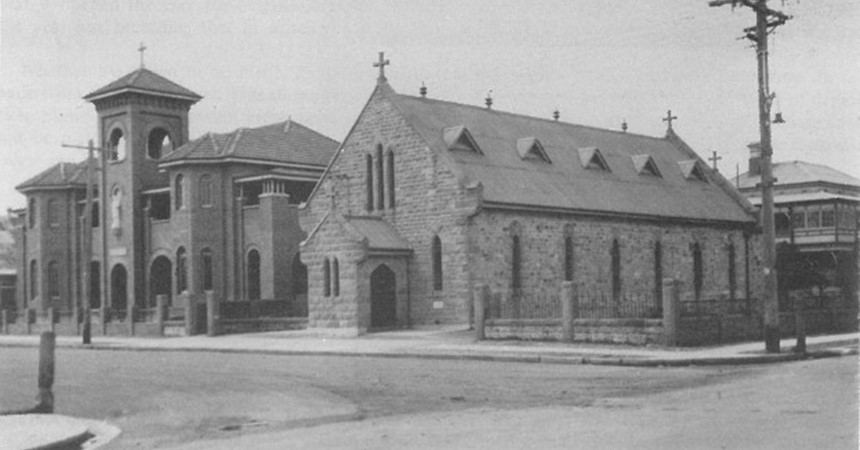The book, Merewether and St Joseph’s: A study of local history 1878-1976 by Barry Gordon, Carmel Moore RSJ and Ken Browne, gives an insight. Much has changed.
The books begins: “The year 1876 was one of definite promise for the little township known as The Junction, which stood astride the boundaries of Burwood (Merewether) Estate and Newcastle Town. Coal exports were booming and a handsome customs house had just been built on the harbour foreshores.
“In an atmosphere of hope, a fine local brick school (The Junction School) had just been opened on land donated by Edward Merewether.”
Catholics in the area were parishioners of St Mary’s on the Newcastle Hill. They could travel to Mass each Sunday in a converted railway wagon, horse-drawn along the coal line as far as Brown St. Passengers paid the Coal and Copper Company two-pence for the journey. They then walked to the top of the Hill and the church that had opened in 1866.
Many Catholics realised the need for their own school and church in The Junction area. They pressed for the building of a denominational school, which could also serve as a church.
The first St Joseph’s was erected at a cost of £1200 on a site just inside the Newcastle Town boundary on Kenrick St. This is where the current St Joseph’s now stands. The building officially opened in August 1876 and remained until demolition in 1962.
The opening of the school-church occurred on 20 August 1876.
The Herald reported: “The new Roman Catholic School at Burwood, Newcastle South was formally opened yesterday by his Lordship Dr Murray, the Bishop of Maitland, in the presence of about 500 persons. The proceedings were of a grand and solemn nature.”
The building was sandstone and the roof galvanised iron. It was described in the newspaper as “substantially built” and “elegant”.
The church and sacristy were used as classrooms during the week, and 120 students attended when the Sisters of St Joseph arrived to teach.
Many changes came to The Junction parishioners over the time the stone church stood.
In 1911, parishioners were able to watch the first gas street lamp lit on the corner of Railway and Morgan streets. In 1912, the stone church was expanded to allow for more parishioners. In 1926, a convent was built next door.
During this time, the parish priest was Fr James Costello, who came to St Joseph’s in 1902 and remained there until he died in 1932.
The stone church survived until 1962, when great change was coming for all Catholics as a result of the Second Vatican Council.
The book says: “In 1962, amidst regret for all, and considerable personal anguish for some, the original and hallowed stone school that had become a church was demolished.”
Next time I am at St Joseph’s The Junction, I will certainly think of that stone church and the many stories of the faith-filled people who called it their school and parish church.
The current St Joseph’s The Junction was blessed and opened by Bishop Toohey on 2 February 1963.
Look out for more articles on the history of the churches in our Diocese coming soon.

